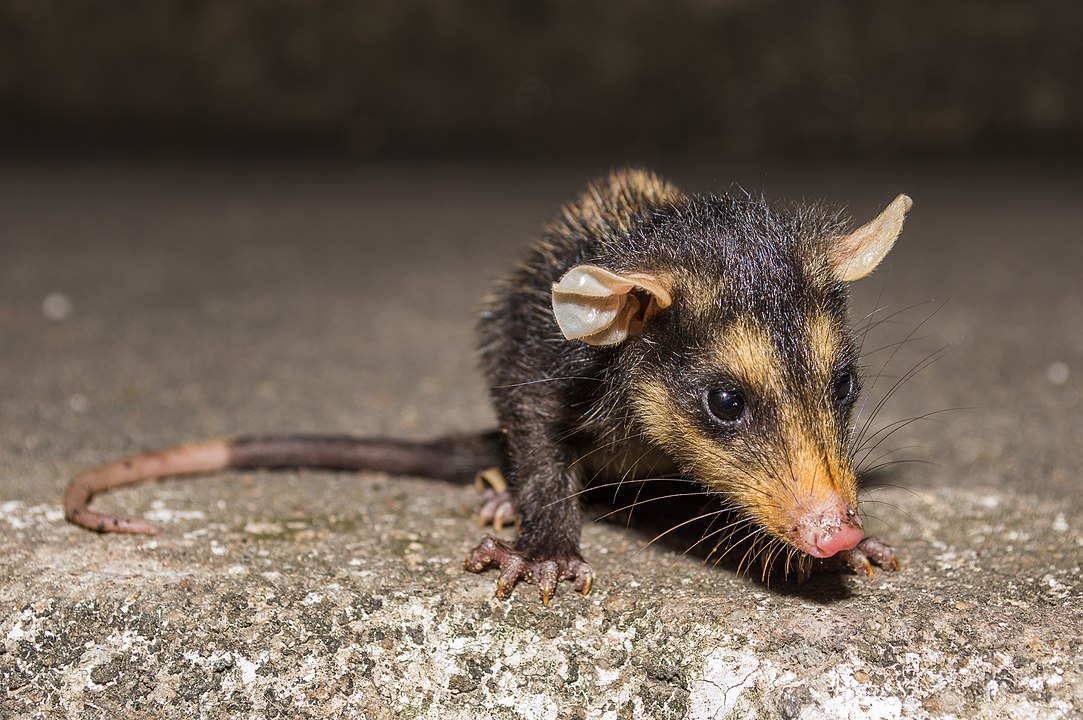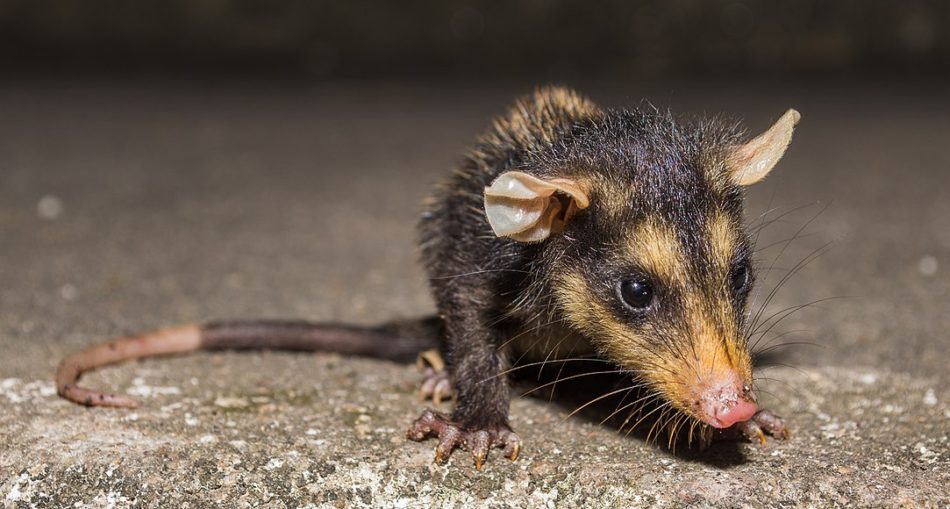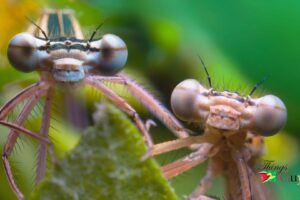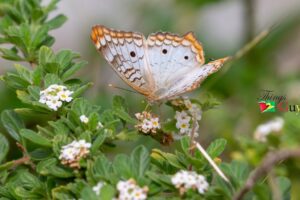In Guyana, the Common Opossum is called Yawari where it is often a sneaky pest, carrying of chicks and ducklings in the middle of the night. Some Guyanese are known to eat Yawari, especially in rural areas. Opossums are marsupials and nocturnal animals. While they prefer to live in trees, they also live in suburban areas. They are often mistakes for rats because of their similar tails and adaptive diets.
The scientific name for the Common Opossum is Didelphis marsupialis but it is known by several other names including the southern or black-eared opossum, gambá and manicou. The Common Opossum is native to Mexico, some South America in countries like Bolivia, Guyana, the Lesser Antilles, West Indies.

Yawari – Photo By Tiagorck – Own work, CC BY-SA 4.0, https://commons.wikimedia.org/w/index.php?curid=49830987
Features Of The Common Opossum
- Sexual Dimorphism – Sexual dimorphism is present in the Common Opossum. The males grow faster and are larger in size. Females also have narrower heads. There is a noticeable difference in the length of their canine teeth, head, and paws.
- Overall Body – The Common Opossum is an energetic animal. The long, coarse hair that makes up its outer fur often gives it a scruffy look. They have long whiskers ad ears. Tails are similar to those of rats, with no fur or hair. These are longer than the bodies and can measure up to twenty (20) inches.
- Colour – Long black hairs hide its fur which is typically a dirty yellow. The tail, face and digits are light while the dorsal colour is dark grey or black, but may appear white. The belly or underside is a light cream or yellow. The face of the Common Opossum is primarily white, eyes ringed by black and a single strip from the crown of the head to their nose.
- Paws – Their paws end in sharp claws.
- Snout – Snouts are elongated and end in a pink nose.
- Limbs – Opossums are four-limbed creatures, capable of walking upright.
- Weight & Length – Male Common Opossums are typically heavier than their counterparts but they weigh around three (3) lbs. Their average body length is three hundred and seventy-one (371) mm.
Scientific Classification Of The Common Opossum
Common Oppusum – Didelphis marsupialis [Scientific name]
- Kingdom: Animalia
- Phylum: Chordata
- Class: Mammalia
- Infraclass: Marsupialia
- Order: Didelphimorphia
- Family: Didelphidae
- Genus: Didelphis
- Species: D. marsupialis
Habitat Of The Common Opossum
The Yawari or the Common Opossum prefers tropical and subtropical habitats up to around two thousand (2000) in altitude, where there are forests and old growth. They are known to make their nests in trees. However, if this is not available the animal makes burrows and nest in dark places. In urban areas, they can be found near houses and garbage dumps, pastures and some plantations.
Diet Of The Common Opossum
The Common Opossum is an omnivore with a diverse diet, eating a wide variety of food. They are able to digest nearly everything which is edible and may change their diet seasonally. Their staple food is invertebrates which include grasshopper, earthworms and beetles. They also eat fruits, carrion and small vertebrates like birds, rattlesnakes and cane toads.
Interesting Tip
- Opossums are immune to venom and so they are able to eat snakes.
Reproduction Of The Common Opossum
Male opossums are known to court the females, in their breeding season which may last from January to September or have several shorter cycles. They may have two to three (2-3) litters per year. Females have oestrous cycles lasting anywhere from twenty-five to thirty-two (25-32) days. To accommodate pregnancy and the birth of her young, the female builds nests in trees or make burrows. Their pregnancies last about two (2) weeks and litter size, usually large, depends on the health of the mother. The female will have five to nine (5-9) offsprings between one and three times per year after maturity and raises the young by herself. The young are born deaf and blind but with developed front claws to help them cling to their mother’s pouch. After about ninety to one hundred and twenty-five days, they are weaned. The lifespan of the Common Opossum is two and a half years.
Interesting Tip
- The Common Opossum is able to control the gender of their babies; males are born when resources are plentiful and females are more likely to be born in areas with minimal resources.
Three Facts About The Common Opossum
- In Guyana the Common Opossum is known to steal baby chickens and ducklings, even killing the larger birds.
- Their litter usually comprise mainly of females.
- Common Opossums like to make their nests in dark places.
The Common Opossum in Guyana
Common Opossums reproduce quickly and in large numbers. They are often found in nests containing their young. They rest in the day, coming out at night to hunt for their food. They are immune to snake venom and are amazingly able to eat rattlesnakes. You typically find them in rural areas, you can find them, living in trees while but some are able to survive in suburban areas. If you hear scruffling in the night and spot a small, scruffy animal with a long tail it is probably a Yawari on a food hunt.
Article References
- https://en.wikipedia.org/wiki/Common_opossum
- https://www.cabi.org/isc/datasheet/84946
- https://animaldiversity.org/accounts/Didelphis_marsupialis/








2 Comments